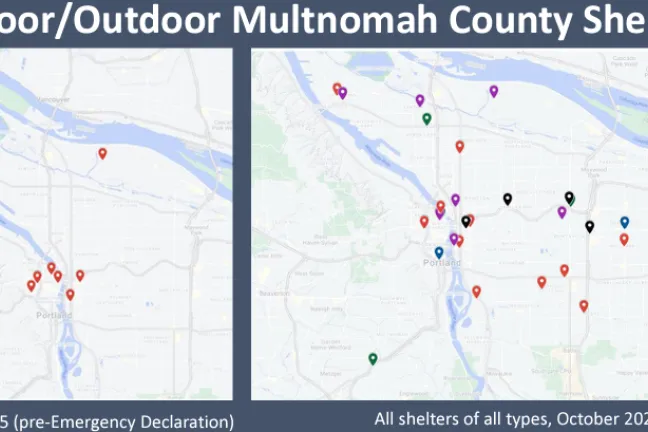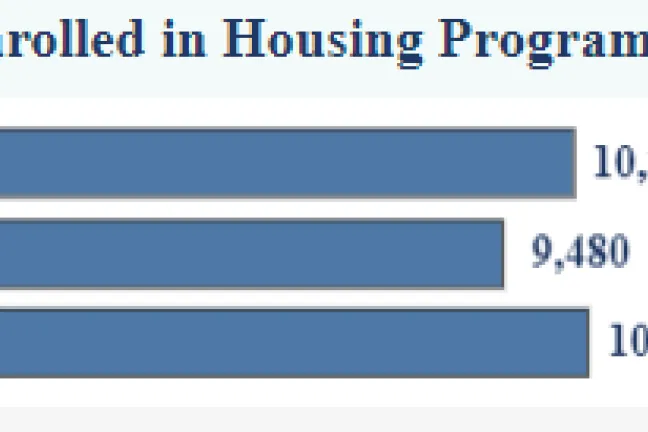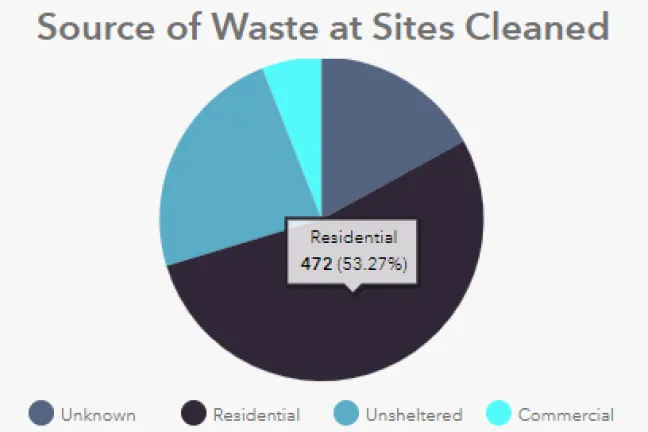Myth 1. Local government is doing nothing to address this crisis
Actual facts:
- Since the City and County created the Joint Office of Homeless Services in 2016, thousands of people each year have moved into housing, including people who've moved to housing directly from the street.
- Available shelter beds have increased from 650 beds in 2015 to 1600 in 2022 - and the quality of shelter has improved significantly.
- Outreach capacity has doubled since 2019, and a new outreach supply center provides gear through outreach workers, community mutual aid and volunteer groups.
- Thousands more people a year have been engaged in housing programs and moved into housing, including people who’ve moved to housing directly from the street, since the Joint Office of Homeless Services was created in 2016.
- Since 2020, for the first time Multnomah, Clackamas and Washington Counties have been working together through Metro to address this crisis through the Supportive Housing Services investment. Permanent supportive housing, rent assistance, shelter capacity, outreach efforts, hygiene services and trash pickup are all increasing rapidly since funds first started being issued in July 2021.
Myth 2. Portland's homeless crisis is more severe than anywhere else
Actual facts:
- This is a national crisis - Los Angeles County alone has close to 20% of the total unsheltered population in the US. Half of the nation's houseless population live in five states: California, New York, Florida, Texas and Washington.
- Portland is 24th in the country for rate of houselessness among cities with over 100k people, according to HUD statistics
- The idea that people come to Portland to be houseless here is patently false - the data shows that the percentage of people experiencing houselessness who moved to Portland from another location is about the same as the percentage of housed people who moved to Portland from another location.
Myth 3. Houseless camps are the source of all trash in the community
Actual facts:
- People who are living in camps do have trash, like everyone else, but counter to stereotypes about them, the amount of trash they produce is not more than housed neighbors - it's just more visible, and doesn't get picked up every week!
- Dumping trash near or on houseless camps is very common - housed people often drive up, dump an old couch or refrigerator, and drive away, and the houseless residents of the camp don't have the means to remove these items from their camps. The Metro RID patrol, which clears an average of 70 tons of waste a month from public property in the Portland metro area, found that around 53% of the waste is from residential sources. Less than one-quarter of the waste comes from houseless camps.
- With the new Supportive Housing Services Measure passed by Metro voters in 2020, the Joint Office of Homeless Services has launched 34 new programs with community partners to hire people experiencing houselessness to clean up trash. In the first six months of operation (July - Dec. 2021), these programs cleaned up 76,000 pounds of trash.
Myth 4. People living on the streets choose to be there
Actual facts:
- In every survey of houseless people in the Portland area, the vast majority say they do not want to be living on the streets.
- The reality is that affordable housing is harder to find - rents have increased significantly over the last several years. According to Portland State University, 38,000 people - across all three Metro counties - experienced homelessness at some point in 2017, and the market has only grown more harsh since then.
- Despite rhetoric to the contrary, racism is indeed a major driving factor of houselessness. People of color are more likely to be pushed into houselessness, and face greater barriers to exiting houselessness. We see this overrepresentation in communities across the country.
Myth 5. Homeless people drive up the crime rate
Actual facts:
- Houseless people are overwhelmingly the victims of crimes, not perpetrators.
- In one recent example, an 80-year old woman sleeping on the street was kicked in the head in her sleeping bag by perpetrators who drove up in a truck, committed the crime and drove away. There is little recourse for this woman and the many others that have been attacked in this way.
- Housed Portlanders frequently call 911 on unhoused neighbors to report "unwanted persons", which wastes police resources because there is no crime being committed.
- Try 211 for help with resources, or ask for 'Portland Street Response Team' when calling 911 to have a mental health professional respond.
There are many reasons that people end up living unsheltered. It takes a community effort to support them and help them get back on their feet. That's what the Joint Office of Homeless Services is committed to doing, with our community partners at the grassroots level and at every level of government. Are you interested in getting involved to help people in need in our community?
Here are some ways to get connected with helping:
- Volunteer with an organization - PSU's Homelessness Research and Action Collaborative has compiled a fairly comprehensive list
- Neighbors Helping Neighbors (volunteering, clean-ups, mainly in North Portland)
- Volunteer with an organized community clean-up, like SOLVE PDX or Trash 4 Peace
- Connect with your neighborhood association - several of them have, or are forming, homeless outreach committees
- Donate supplies - Here is the latest needs list from local providers.
You can download and print this fact sheet in flier form as well:
Document



